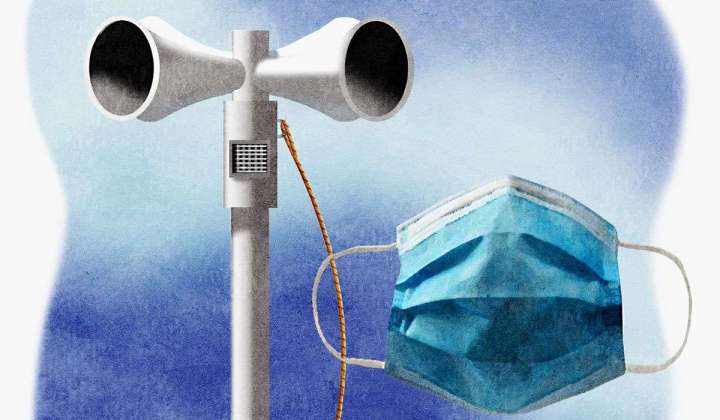Past time to end COVID-19 emergencies

OPINION:
President Biden announced last week that he would wind down the COVID-19 public health and national emergencies on May 11. A day later, the House voted on party lines to end the emergencies immediately.
The action is long overdue. It’s past time to end these emergencies. They’ve become little more than excuses to funnel taxpayer dollars to politically favored institutions and groups.
When then-President Donald Trump declared a national emergency in March 2020, our pandemic response playbook looked very different than it does now. Back then, there were no vaccines or treatments for the virus.
Today, more than 80% of Americans have received at least one dose of vaccine. Most people infected with COVID-19 these days develop mild symptoms. For those at risk of severe illness, several treatments are widely available.
Meanwhile, case counts are trending downward [as of Jan. 30] — despite warnings of a winter surge.
Common sense dictates that we’re no longer in the throes of an emergency. Mr. Biden himself famously declared that “the pandemic is over” more than four months ago, in September.
Yet less than a month later, his administration extended the public health emergency for 90 days. In January, he did so again until mid-April. And now, he’s set the end for mid-May.
Perhaps federal officials aren’t quite ready to give up the expansive powers and billions of taxpayer dollars that the emergency declarations have given them.
Exhibit A is a massive expansion of Medicaid. In 2020, Congress offered states 6.2% more Medicaid funding as long as they didn’t kick enrollees off the entitlement’s rolls — regardless of whether they were eligible — or institute stricter eligibility requirements.
These looser Medicaid rules resulted in a 30% increase in enrollment between February 2020 and September 2022. As of October 2022, more than 84 million Americans were covered by the entitlement.
The extra federal money has been a windfall for states. Between 2020 and 2022, states received more than $100 billion in added Medicaid funding. They had to pony up less than half that on their own to keep everyone enrolled.
States can resume eligibility determinations at the beginning of April, thanks to a provision in the year-end omnibus package Congress passed in December. The Department of Health and Human Services estimates that 8.2 million people will be disenrolled because they’re ineligible. Five million of them are projected to get coverage through their employers, and 2.7 million are estimated to qualify for taxpayer-subsidized coverage through Obamacare’s exchanges.
HHS estimates that 6.8 million people will be kicked off Medicaid but remain eligible for the program. In exchange for phasing out the expansion early, Democrats managed to preserve extra federal payments for this group at a steadily descending clip through the end of the year as an enticement to get them signed up again.
Hospitals are also reluctant to see the public health emergency end, as it means the end of billions in taxpayer aid.
Under the CARES Act, which was enacted in early 2020, hospitals receive a 20% reimbursement rate boost when caring for Medicare patients with COVID-19. They’ve also received more than $15 billion in aid from the HHS Provider Relief Fund. Both the payment bump and the bailouts are tied to the public health emergency.
Those provisions have padded the bottom lines of many hospitals. A report from the North Carolina State Health Plan, a division of the Department of State Treasurer, found that seven hospital systems in the state received $1.5 billion in federal aid in 2020 and 2021 — and saw their cash and reserves surge $7.1 billion between 2019 and 2021.
COVID-19 isn’t the crisis it once was. It’s time to put an end to the COVID-19 emergency declarations — and make stewardship of taxpayer dollars a priority once again.
• Sally C. Pipes is president, CEO and Thomas W. Smith Fellow in Health Care Policy at the Pacific Research Institute. Her latest book is “False Premise, False Promise: The Disastrous Reality of Medicare for All” (Encounter 2020). Follow her on Twitter @sallypipes.






